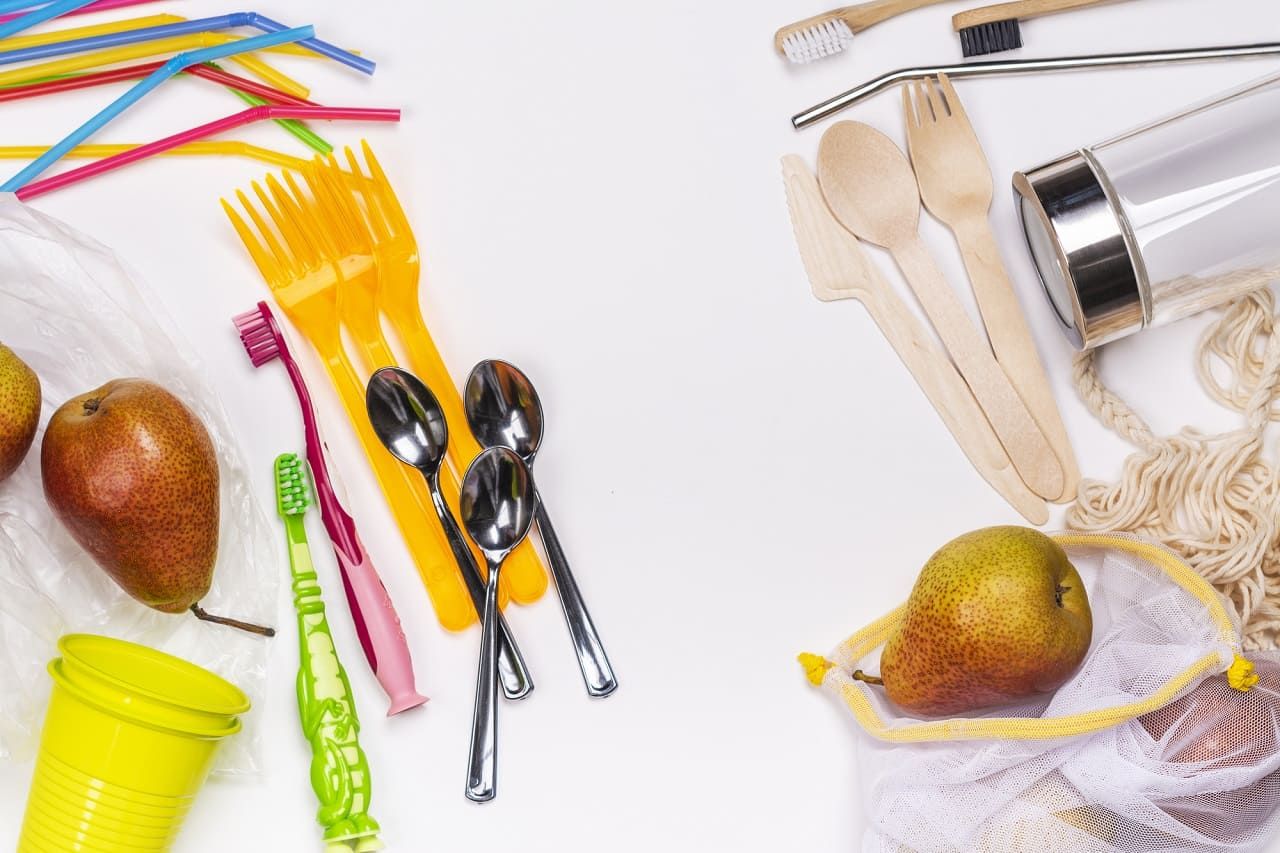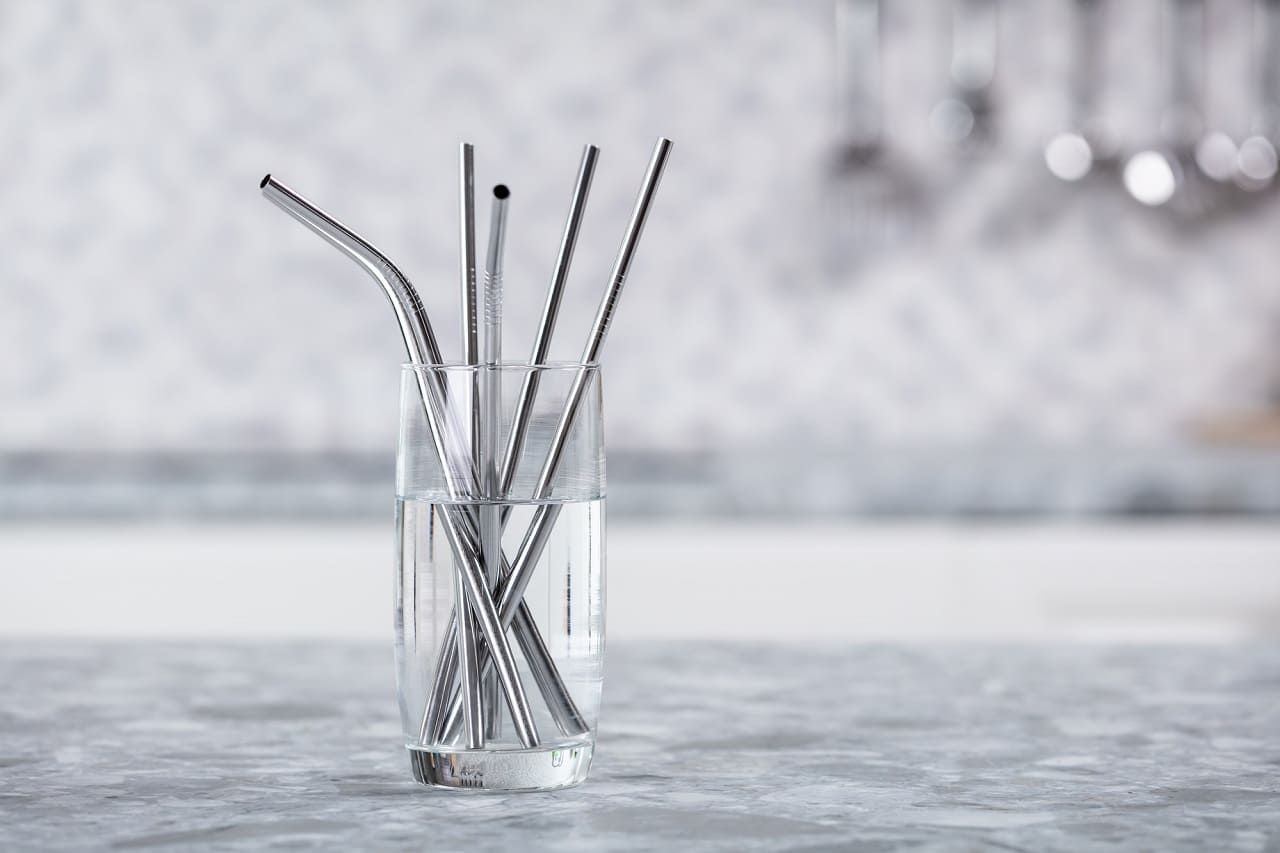Our world is flooded with plastic products: from disposable cups and bags to strong, lightweight carbon fibre. However, in recent years, humankind has been thinking about what to do with these mountains of plastic, which is easy to produce but difficult to recycle. While it takes 100-200 years for plastic bags to decompose, other types of plastic products can stay in the ground for 400-700 years. Scientists have found microparticles of plastic both at the bottom of the oceans and on mountaintops: places where nature was thought to be unspoiled. This must be dealt with somehow.
Perhaps the most effective way to reduce plastic consumption is using alternative materials, one of which is steel. It is a viable competitor to plastic in many areas. There are at least 10 reasons why steel products are the best alternative to plastics.
Steel versus plastic: main advantages
1. Higher heat resistance. Steel withstands a wider range of temperatures than most industrial plastics. The operating range of steel, depending on its composition and properties, is from -101°C to +871°C. The range for most plastics is from -51°C to +121°C. While there are exceptions, steel is better at withstanding fast or cyclic temperature fluctuations.
2. Improved corrosion resistance. Stainless steel and many other alloyed grades are corrosion resistant, both in the atmosphere and in clean water. High-alloyed stainless steel grades are resistant to corrosion in most acids, alkaline solutions and chlorinated media. This is something that most plastics cannot do.
3. Versatility. Steel can be covered with plastic to gain the benefits of both products. While plastic products are made by casting and joined either through melting or metal compounds, from the point of view of processing versatility, metal has more advantages. It can be moulded, processed using different tools, cut, bent, boiled and assembled in many ways that are not available for plastic.
4. Cleaning. Industrial oils, greases and solvents stain plastic more readily than steel. Stainless steel surfaces are also easier to keep clean. In addition, the electrochemical polishing of the stainless steel surface helps with the disinfection and sterilisation of food-grade and medical steel.

5. Strength. The tensile strength of plastic is much lower than steel. Steel products are also more durable. In addition, ventilation holes made in a plastic container, for example, affect its performance more than laser cut holes in wire mesh or sheet metal.
6. Moisture resistance. Steel does not absorb water. Some steel grades do not rust from contact with moisture. Certain plastics, however, will absorb small amounts of water, which can damage them.
7. Fire resistance. Special steels with a high chromium and nickel content are resistant to scale formation and retain their strength even at high temperatures. Plastics, on the other hand, melt quite easily when exposed to fire and can release harmful chemicals during the melting process.
8. Equipment costs. Steel products can be made using simple, widely available tools, which help to give the products various shapes. Most plastics require expensive specialty melting equipment. This often makes the manufacture of plastic products profitable only at large volumes.
9. Durability. The overall life cycle costs of products, including original equipment, are often lower for most steels. The increased durability also makes the investment in steel more profitable in the long term.
10. Environmental friendliness. Although plastic products break much more quickly than steel, the material itself takes a long time to decompose in nature. In addition, most plastics are produced from oil, a non-renewable natural resource. Meanwhile, steel is almost 100% recyclable and reusable. It can be re-smelted and reshaped many times.

Clearly, this is a much deeper question than whether steel or plastic is stronger. In addition, there are also many practical examples where from steel products win the battle against plastic.
1. Healthy water. A kettle, with detailed enamel patterns or in shiny stainless steel, steams and whistles on a gas stove. Like its ancestor the iron samovar, such a kettle is practically outdated. Today, most Ukrainian kitchens use a more convenient electrical device instead. These are often made of plastic: polypropylene or polycarbonate. While the former is cheaper, it releases harmful substances when boiling water that can poison tea drinkers. While polycarbonate is less harmful, it is also more expensive. Therefore, experts recommend choosing stainless steel electric kettles. They are more durable and do not emit harmful substances. A third alternative is glass electric kettles, but even they cannot work without a steel heating element.
2. Construction. Steel and steel products are the main material for many construction projects. For example, skyscrapers or cast-in-place concrete frame buildings. About 10 years ago, the market began to actively offer fiberglass reinforcement for concrete. Optimists believed that it would replace steel. This never happened. Today, plastic fibres are mainly used to reinforce the concrete foundations of small buildings and relatively insignificant structures. Steel was, is and remains the structural material of choice throughout the world.
3. Sports cars, but no more. A familiar grey-black graphite pattern can often be seen on street racing cars. Unlike real racing cars, this is not carbon fibre, but rather an imitation: either stickers or paint. Real carbon fibre, which is strong and lightweight, is produced in limited quantities, so the material is expensive and inaccessible. The safety of a modern car comes from metals and their alloys, among which steel plays a key role. Even Tesla cars have a steel frame, and the body of the Cybertruck pickup will be made of heavy stainless steel plate. The same holds true for the SpaceX Starship rocket.
4. Reliable washing. Two materials are primarily used to make the drum of modern washing machines: stainless steel or durable plastic. While each has its own pros and cons, if you need a truly reliable unit, the choice is steel. It lasts longer and is easier to repair. After all, the plastic drum of the washing machine can crack. This necessitates either expensive repairs or the purchase of a new washing machine. After all, the fragility of plastic has not yet been resolved.
The advantage of steel over plastic exists both in everyday life and in industry. As humankind increases its focus on preserving nature, more such fields will be found.
